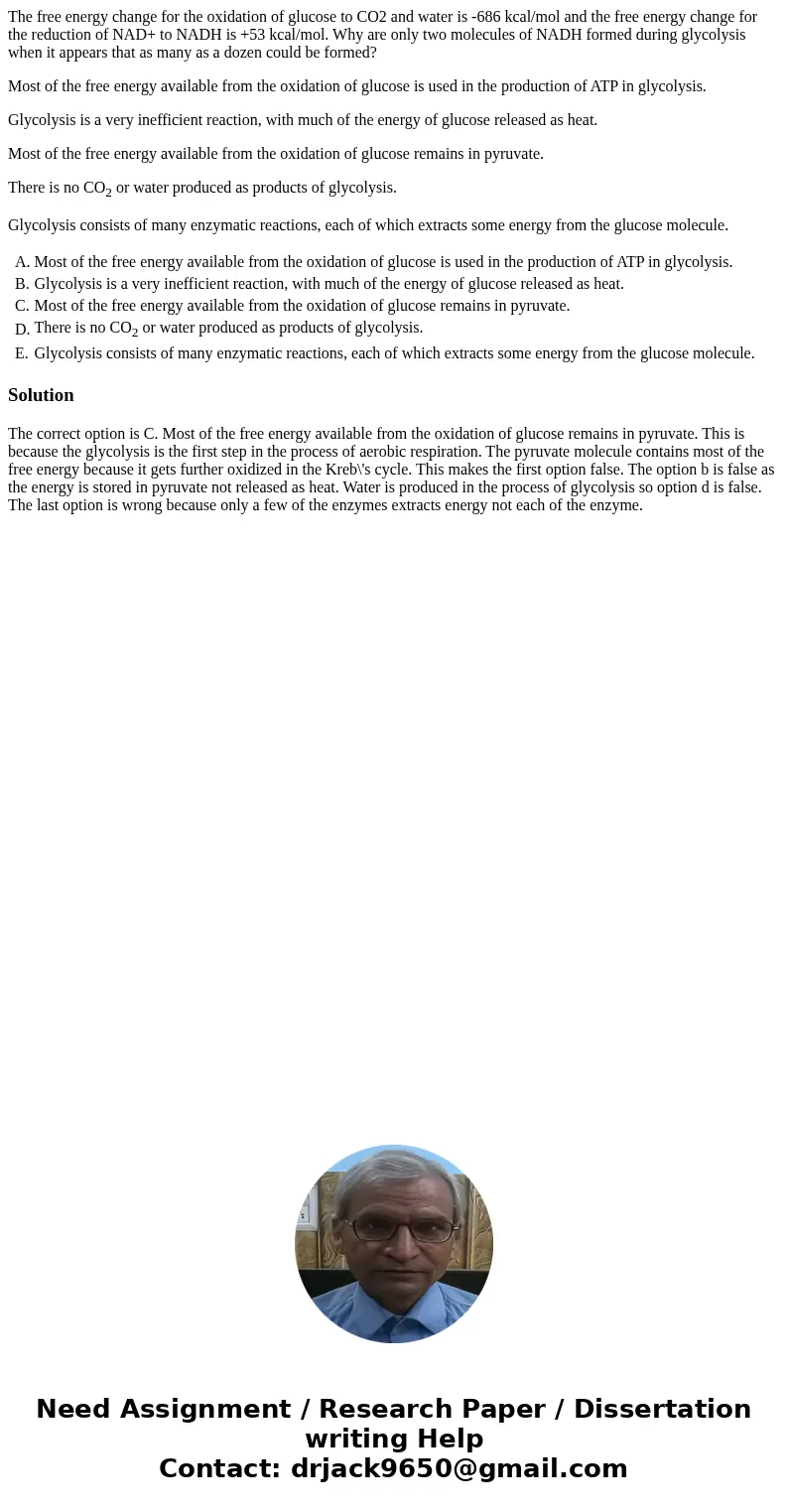The free energy change for the oxidation of glucose to CO2 a
The free energy change for the oxidation of glucose to CO2 and water is -686 kcal/mol and the free energy change for the reduction of NAD+ to NADH is +53 kcal/mol. Why are only two molecules of NADH formed during glycolysis when it appears that as many as a dozen could be formed?
Most of the free energy available from the oxidation of glucose is used in the production of ATP in glycolysis.
Glycolysis is a very inefficient reaction, with much of the energy of glucose released as heat.
Most of the free energy available from the oxidation of glucose remains in pyruvate.
There is no CO2 or water produced as products of glycolysis.
Glycolysis consists of many enzymatic reactions, each of which extracts some energy from the glucose molecule.
| A. | Most of the free energy available from the oxidation of glucose is used in the production of ATP in glycolysis. | |
| B. | Glycolysis is a very inefficient reaction, with much of the energy of glucose released as heat. | |
| C. | Most of the free energy available from the oxidation of glucose remains in pyruvate. | |
| D. | There is no CO2 or water produced as products of glycolysis. | |
| E. | Glycolysis consists of many enzymatic reactions, each of which extracts some energy from the glucose molecule. |
Solution
The correct option is C. Most of the free energy available from the oxidation of glucose remains in pyruvate. This is because the glycolysis is the first step in the process of aerobic respiration. The pyruvate molecule contains most of the free energy because it gets further oxidized in the Kreb\'s cycle. This makes the first option false. The option b is false as the energy is stored in pyruvate not released as heat. Water is produced in the process of glycolysis so option d is false. The last option is wrong because only a few of the enzymes extracts energy not each of the enzyme.

 Homework Sourse
Homework Sourse